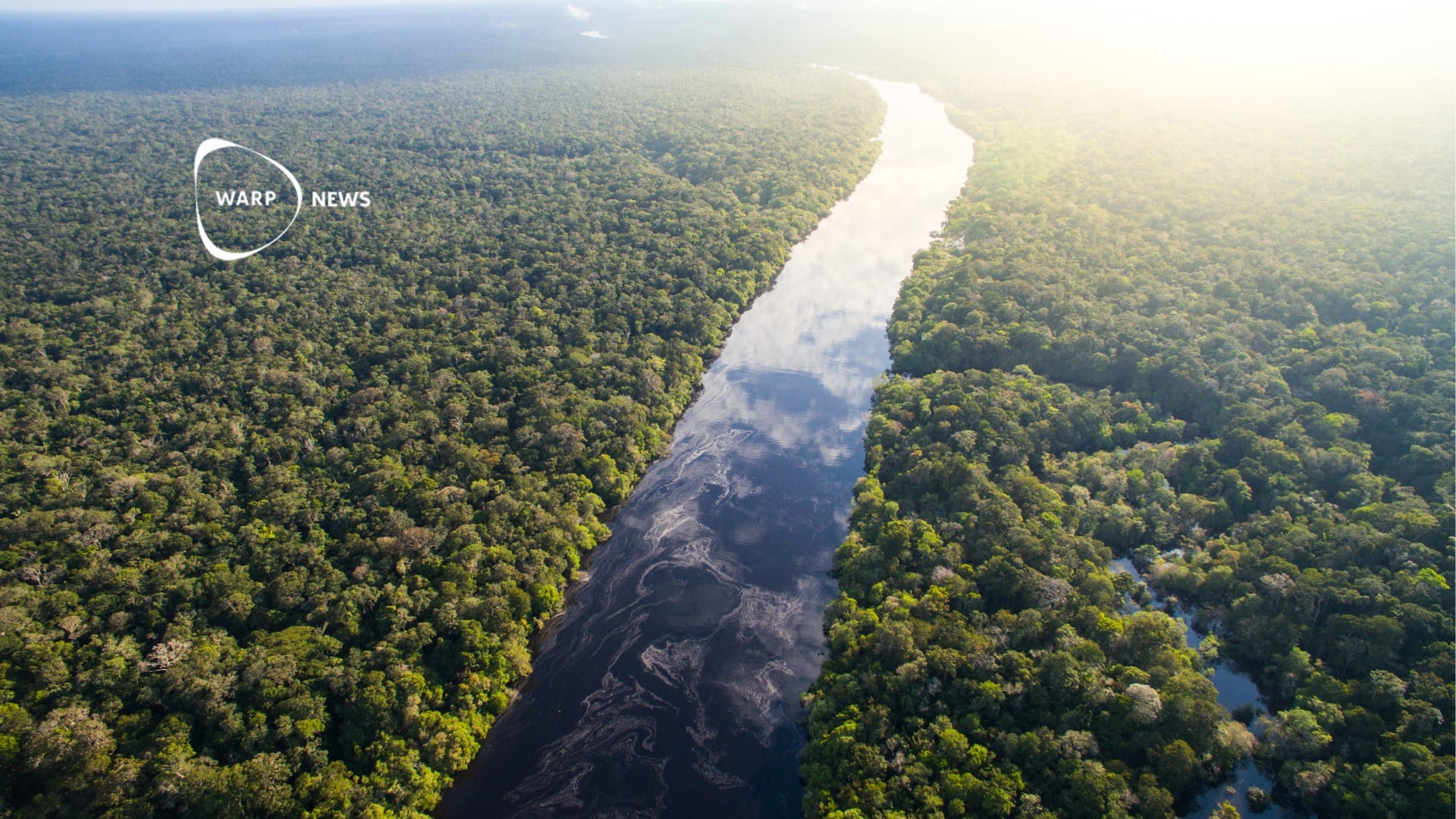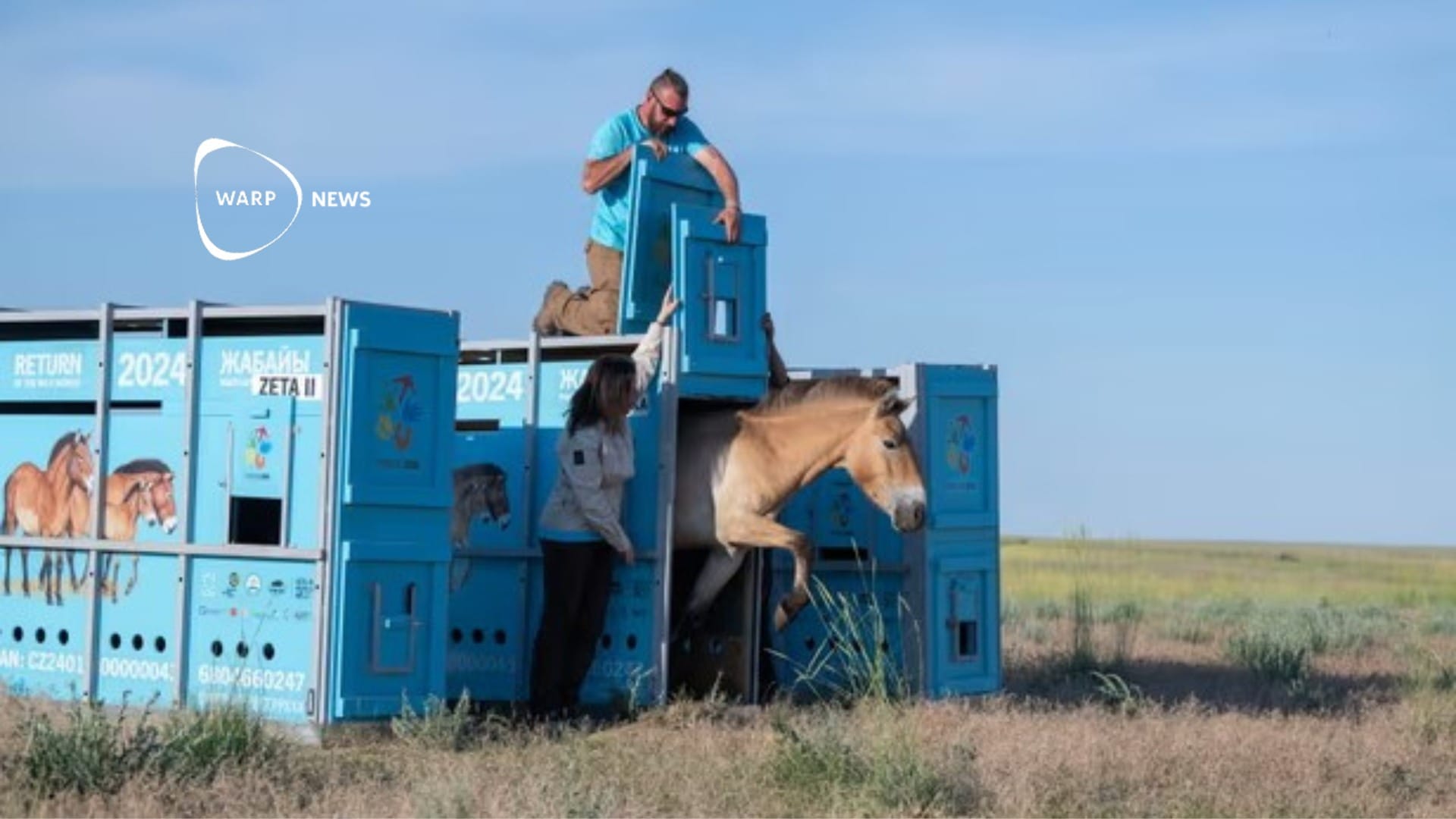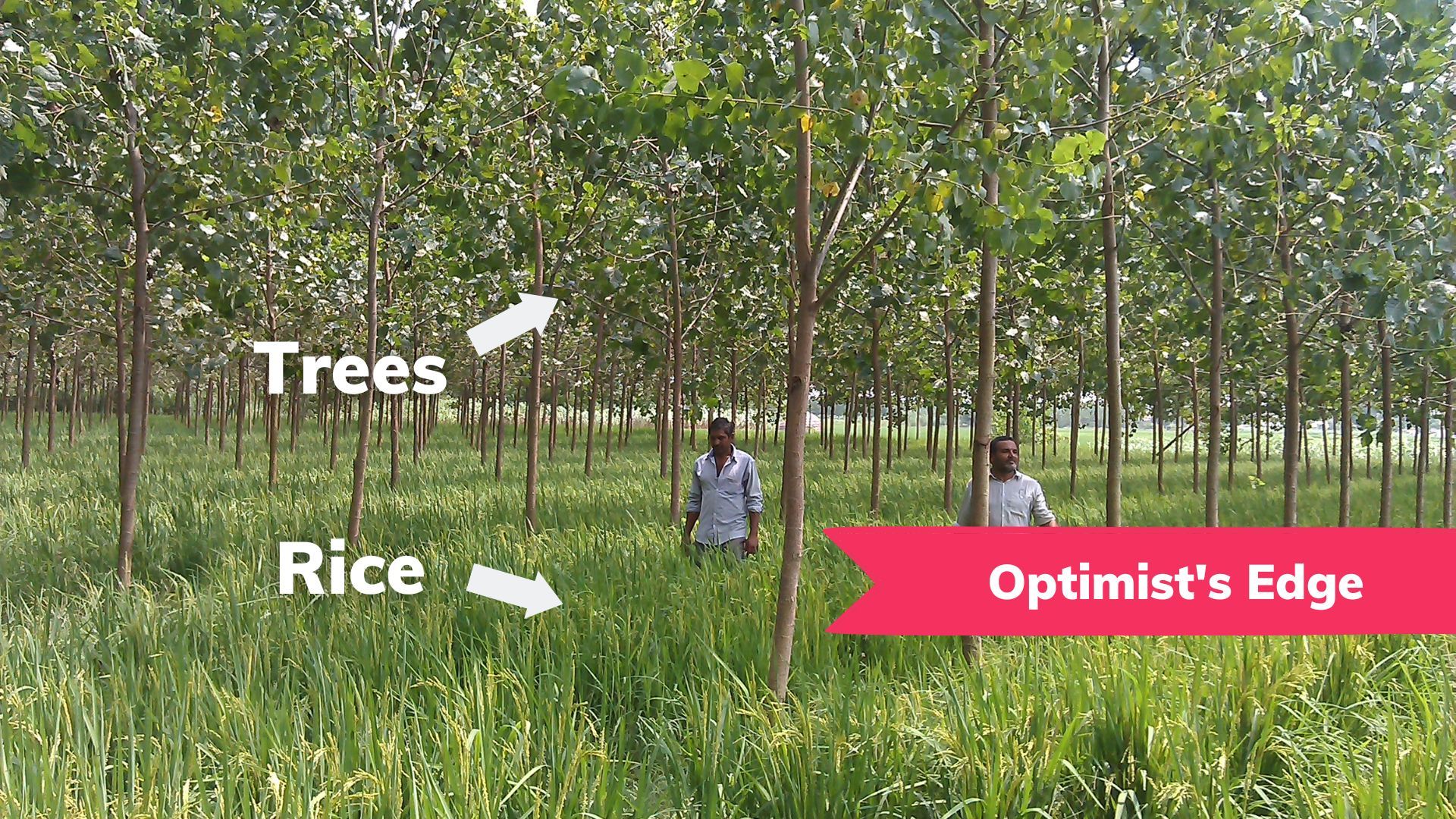
💡 Optimist's Edge: Trees and agriculture can be combined
By cleverly combining trees with other useful plants, we can have an agriculture that benefits both the cultivator and the surrounding nature.
Share this story!
📉 What people think
We are used to associating agriculture with open fields. Everything from historical forms of swidden burning to the logging of the Amazon. There are many examples of how trees and forests have been removed to prepare land for the production of cereals and other viands. Deforestation often has major consequences for both animals and the environment. It also contributes to soil erosion and increased emissions of greenhouse gases.
But is it possible to do farming in another way? Could we combine trees with growing other plants? In a survey conducted by Warp News, two-thirds of respondents believe that it is possible to combine trees with agriculture, but one-third say no. The majority is right.
📈 Here are the facts
Today, interest in so-called regenerative agriculture is increasing. Many agricultural practices deplete the soil. Instead, protecting nature and preserving biological diversity are important. But what if we can even improve or recreate the landscape using agriculture? To give more than we take. That's what regenerative agriculture is all about.
Agroforestry is an example of regenerative agriculture. It is a cultivation method that is gaining increasing interest and just as it sounds, it is about letting the trees take their place in agriculture. This is not really a new method. Coffee beans, for example, have long been grown under banana plants that provide shade. The Spanish ham, which gets its good taste from pigs that have eaten fallen acorns, is another famous example of how trees and agriculture can be combined.

There are a number of benefits to using trees in plantations. Let's return to the coffee example: By mixing different crops, the risks for the farmers are reduced – if it's a bad coffee year, they can make money by selling bananas instead. In addition, the total yield per area increases. The banana plants provide shade and are also better at storing water during dry years. A combined coffee-banana cultivation also stores more carbon dioxide than a monoculture.
That trees capture carbon dioxide and thus contribute to counteracting global warming is an important argument for forestry agriculture. But trees have more benefits for the ecosystem.
Trees can absorb water deeper into the soil and provide shade for other plants, such as banana plants. Trees can bind the soil and reduce the risk of nutrients leaching from the soil, which would otherwise lead to the eutrophication of watercourses. Unlike large-scale fields where only one crop is grown, more mixed agriculture with, among other things, trees can make room for pollinating insects and birds. Trees can also contribute to grazing for various animals and nutrition to the soil.
What forestry agriculture looks like depends on which crops are grown. In the coffee plantation in the picture above, the plants grow under trees that were already there and were preserved instead of being cut down. Other examples are when a field with, for example, corn or wheat is bordered by avenues of trees, which protect against wind and bind the soil.

Pigs and grazing animals that can eat leaves and shoots from trees or fallen fruits, such as acorns, are another example of forestry agriculture that has also been practiced for a long time. The Swedish cottage industry is an example of this.
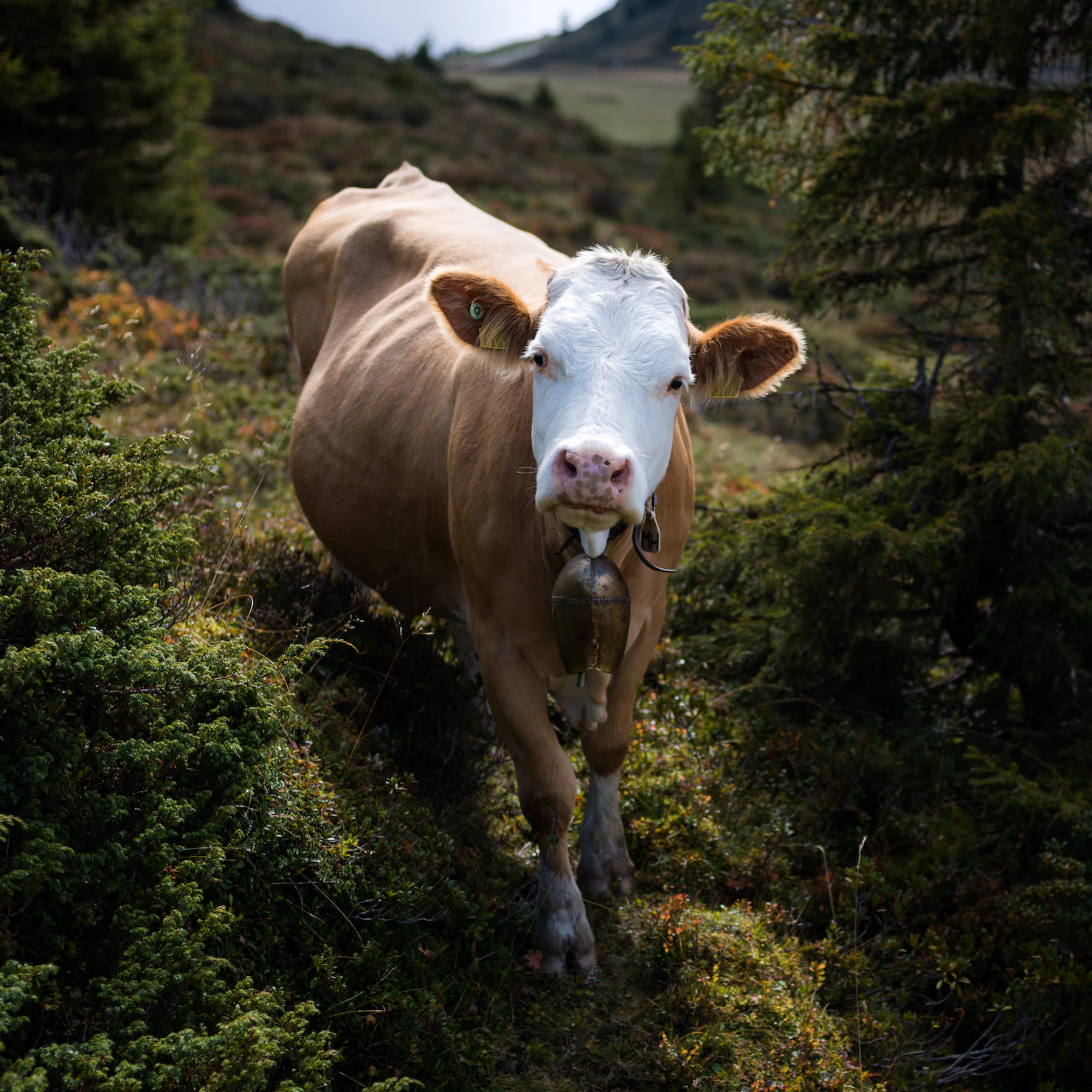
💡 Optimist's Edge
What are the advantages for those who choose to incorporate trees into their plantations? To a large extent, it is about the fact that trees can provide protection against the elements in various ways. This makes the crops less exposed to drought, excessively strong sun or soil erosion.
Another advantage is that it reduces the financial risks of growing several different crops. If the harvest of, for example, coffee or corn should have a bad year, or if, for example, the plants are affected by diseases or pests, there are also other crops to make money from.
Forest agriculture becomes the opposite of monoculture, where all eggs are put in the same basket. It can also work so that the harvest is simply better when you can combine two or more crops on the same land. You get two for the price of one, so to speak.
Many people believe that we have to remove trees to have efficient agriculture. Today, knowledge is increasing about how different forms of forestry can do exactly the opposite.
👇 How to get the Optimist's Edge
❓ So, how do you get the most out of this knowledge?
- Consume shade-grown coffee or cocoa. Then you favor crops grown in the shade of trees. The closer to the equator – that is, the more sun the crops are exposed to – the greater the need for shade trees, so whether the coffee is shaded or not can depend on where it comes from.
- Create your own forest garden. By combining trees, shrubs and low-growing plants, a forest of food can be created where most plants are edible for humans. It's almost like a Garden of Eden where you can harvest berries, nuts and ground-covering leaves. But it is not only people who benefit, just as we mentioned above, there are many benefits, not least for the ecosystem. An important element in forest gardens is nitrogen-fixing plants that can absorb nitrogen from the air and thus fertilize the soil. Despite the amazingness of everything that grows above ground in a forest garden, many believe that the most important thing is what happens below the surface, where different plants, animals and microorganisms interact to contribute to improving the soil, instead of depleting it.
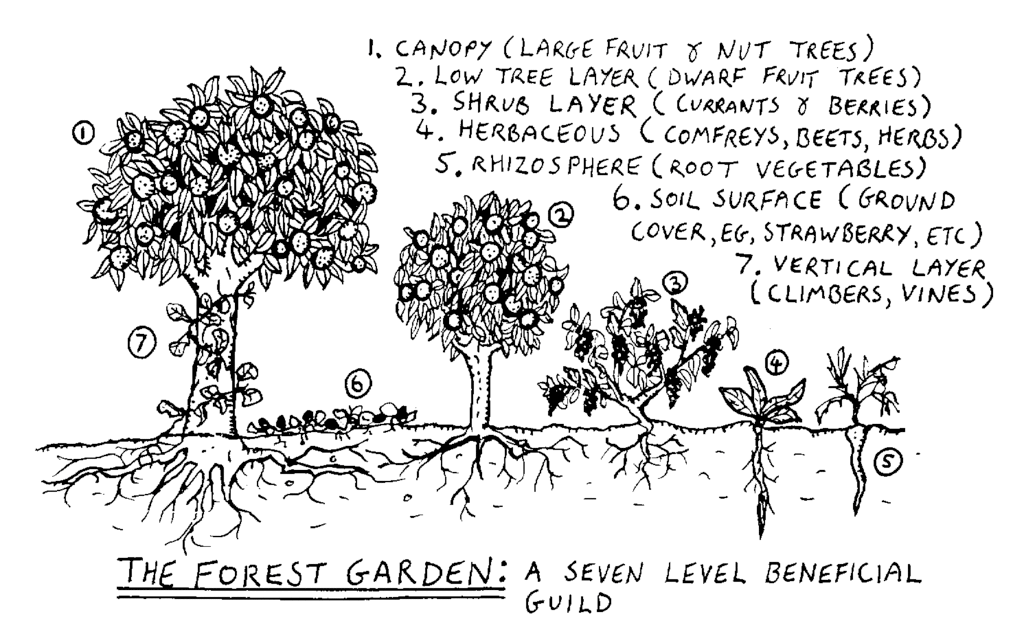
- Support, invest in or work for an agroforestry company. Here are some examples: Propagate provides a digital tool for farmers who want to get more trees into their farms. Renature supports projects for regenerative agriculture in several countries. Todavida runs various projects in Brazil and also sells the products that forest agriculture gives rise to online.
By becoming a premium supporter, you help in the creation and sharing of fact-based optimistic news all over the world.
